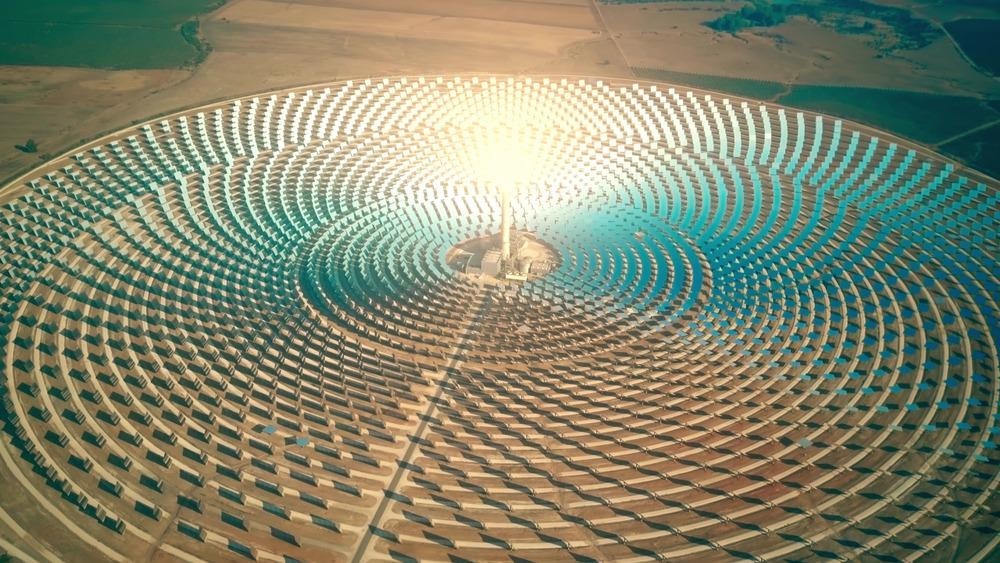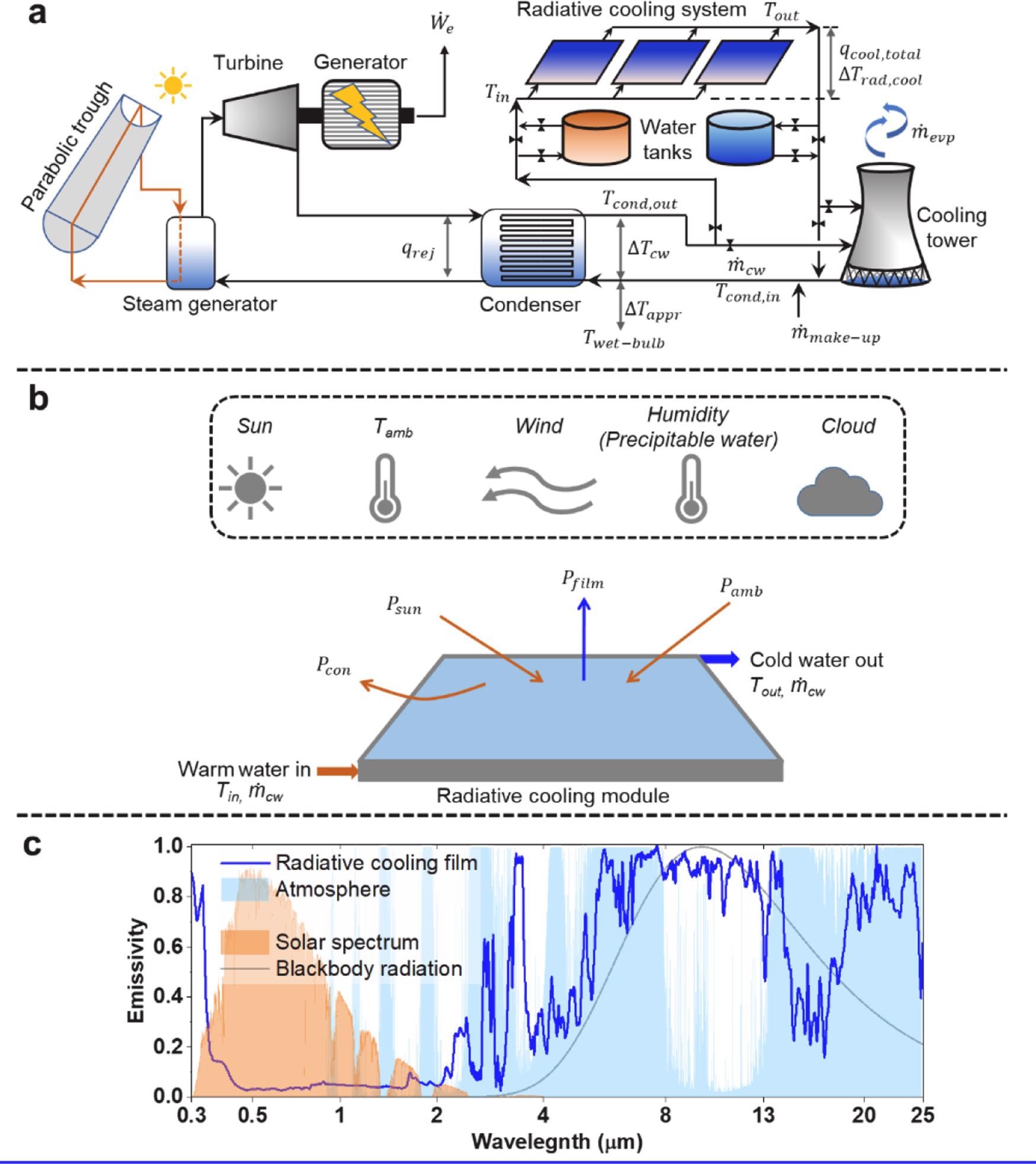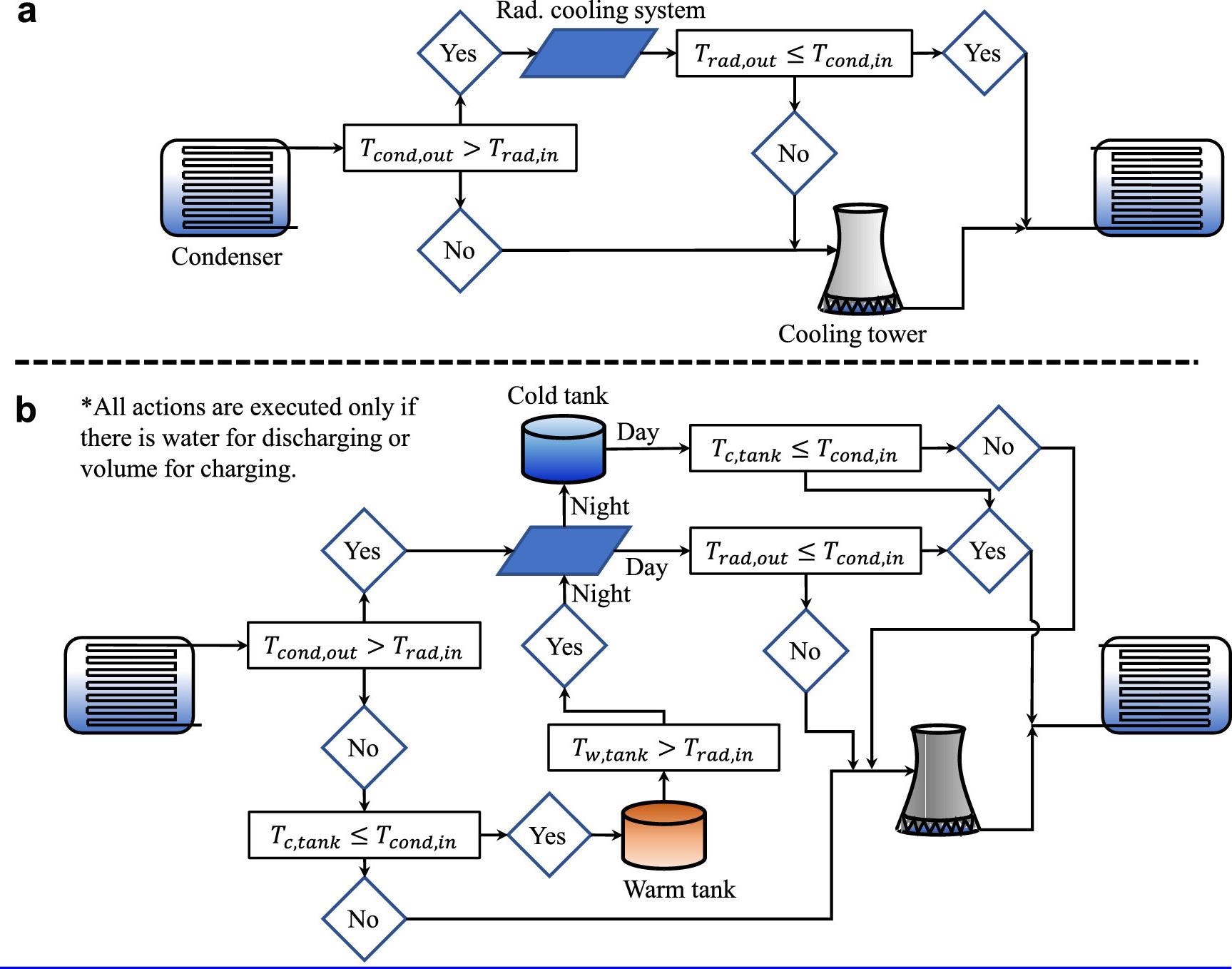 By Surbhi JainMar 3 2022Reviewed by Susha Cheriyedath, M.Sc.
By Surbhi JainMar 3 2022Reviewed by Susha Cheriyedath, M.Sc.In an article recently published in the journal Energy Storage and Saving, the researchers presented a detailed discussion on the utility of radiative cooling and cold storage in concentrated solar power plants.

Study: Radiative Cooling and Cold Storage for Concentrated Solar Power Plants. Image Credit: Novikov Aleksey/Shutterstock.com
Background
Concentrated solar power (CSP) plants are rapidly becoming one of the most important sources of renewable energy. Traditional thermal power plant cooling solutions, such as less effective dry cooling and water-intensive wet cooling, are not appropriate choices in such severe situations because most CSP facilities are built in sunny, hot, and dry locations with limited water supplies.
Unlike traditional thermal power plants, where output power generation and input thermal energy can be easily controlled, CSP plants are less flexible due to limitations imposed by solar irradiation availability unless aided by thermal storage devices or additional thermal energy sources.

A recirculating wet-cooled concentrated solar power (CSP) plant supplementally cooled by a radiative cooling system. (a) Schematic of a parabolic-trough CSP plant with an evaporative wet cooling tower and a supplemental radiative cooling system placed before the cooling tower. (b) Schematic of a single radiative cooling module laminated with a highly solar-reflective and selectively-emissive radiative cooling film. It also highlights the determining weather conditions, along with the heat transfer processes associated with this radiative cooling module. (c) Spectral emissivity of the radiative cooling film and the atmosphere (PW = 5mm, zenith = 45o) along with spectral solar irradiance and blackbody radiation. Image Credit: Aili, A et al., Energy Storage and Saving
To address the water-related issues that CSP plants confront, supplemental cooling solutions must be developed to reduce CSP plants' reliance on the water while keeping thermal efficiency at the level achieved with recirculating wet cooling. Radiative cooling is another potential supplemental cooling solution that has recently attracted a lot of attention.
Even under direct sunlight, novel cooling radiative materials have been shown to make the temperature of objects sub-ambient. Water cooling systems using radiative cooling materials have been created and proved to be capable of chilling water to sub-ambient temperatures with minimal evaporative water loss and electricity use. Under certain meteorological circumstances, radiant cooling is proposed for CSP facilities; however, it is unclear how the water-saving potential differs across different areas.
About the Study
In the present study, the authors investigated the possibility of reducing consumptive water use in recirculating wet-cooled concentrated solar power (CSP) facilities by combining additional cold storage and radiative cooling. They discussed the importance of solar-rich yet hot and water-stressed areas for the CSP systems.
They also evaluated the impact of water-free air cooling and water-intensive wet cooling on the functioning of CSP plants. The impact of recirculating evaporative cooling on the thermal efficiency and water availability/temperature of the CSP systems was illustrated. Also, the importance of efficient supplemental cooling to reduce water loss while preserving thermal efficiency for CSP facilities was determined.
The daytime-only radiative cooling and the annual potential water saving in the hot southwestern US region were determined when the radiative cooling system worked both day and night with cold storage, by using a reference CSP plant model with a supplemental radiative cooling system as large as the plant solar field. For recirculating wet-cooled CSP plants, the authors investigated the use of cold storage and radiative cooling as auxiliary cooling technologies.
The cooling capacity of the proposed radiative cooling system was modeled in terms of the capacity and size of the water storage tanks for a reference CSP plant operating under various weather conditions across the contiguous United States. Annual water-saving maps for the continental United States were produced using two cooling strategies: continuous day-and-night operation and daytime-only operation.

Cooling strategies of the supplemental radiative cooling system for a wet-cooled CSP plant without thermal storage. (a) Daytime-only operation without cold storage. This strategy is also applicable if the plant is 24-hour operational with thermal storage or an additional thermal energy source. (b) Day-night operation with cold storage. This strategy assumes that the CSP plant power operates only during the day without thermal storage or additional thermal energy source. Image Credit: Aili, A et al., Energy Storage and Saving
Observations
In this study, the researchers observed that when wet-cooled CSP plants were supplemented with radiative cooling, the amount of evaporative water used was reduced. It was also observed that the daytime-only radiative cooling could save 40%–60% of annual consumptive water use in the hot southwestern US region, whereas the annual potential water saving was as much as 65%–85% when the radiative cooling system worked both day and night with cold storage.
Furthermore, it was determined that the annual potential water saving with the daytime-only radiative cooling system was nearly 40%–60% in the rather hot and arid southwestern US region, where concurrently handling water scarcity and thermal power plant cooling was tough. It was also demonstrated that the annual potential water savings with the day-night radiative cooling system were as high as 65%–85%.

Annual water saving maps of the contiguous US for wet-cooled CSP plants. (a) The daytime-only radiative cooling system. (b) The day-night radiative cooling system. The daytime-only radiative cooling system potentially reduces 40 – 60% of the water loss of CSP plants in the southwestern US region while the day-night radiative cooling system reduces the water loss by 65 – 85% in the same region. Image Credit: Aili, A et al., Energy Storage and Saving
Conclusions
In conclusion, this article elucidated the water-saving potentials of daytime-only and day-night radiative cooling by combining a radiative cooling system with the evaporative cooling tower of a reference CSP facility – the Mojave solar project. The model was also applied to the reference CSP plant in over 3000 locations across the United States under varied weather conditions. The authors demonstrated the water-saving maps of the contiguous United States for day-time and day-night radiative cooling systems by projecting how much evaporative water loss may be avoided in such conditions.
For recirculating wet-cooled CSP plants, the authors emphasized that radiative cooling and cold storage can be used as auxiliary cooling technologies. The authors also believe that the current findings open up the possibility of increasing the thermal efficiency of wet-cooled CSP plants while lowering their evaporative water use, which is critical in water-stressed and hot locations with arid and desert climates.
Source
Aili, A., Tan, G., Yin, X., et al. Radiative Cooling and Cold Storage for Concentrated Solar Power Plants. Energy Storage and Saving (2022). https://www.sciencedirect.com/science/article/pii/S2772683522000024
Disclaimer: The views expressed here are those of the author expressed in their private capacity and do not necessarily represent the views of AZoM.com Limited T/A AZoNetwork the owner and operator of this website. This disclaimer forms part of the Terms and conditions of use of this website.